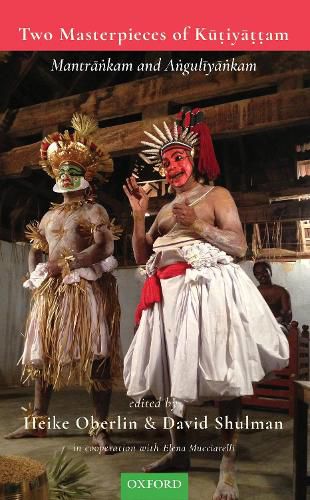Readings Newsletter
Become a Readings Member to make your shopping experience even easier.
Sign in or sign up for free!
You’re not far away from qualifying for FREE standard shipping within Australia
You’ve qualified for FREE standard shipping within Australia
The cart is loading…






Kutiyattam, India’s only living traditional Sanskrit theatre, has been continually performed in Kerala for at least a thousand years. The actors and drummers create an entire world in the empty space of the stage by using spectacular costumes and make-up and by an immensely rich interplay of words, rhythms, mime, and gestures.This volume focuses on Mantrankam and Anguliyankam, the two great masterpieces of Kutiyattam. It provides fundamental general remarks and relates them to pan-Indian reflections on aesthetics, philology, ritual studies, and history. Authored by scholars and active Ku?iya??am performers, this is the first attempt to bring together a set of sustained, multi-faceted interpretations of these masterpieces-in-performance. With an aim to open up this ancient art form to readers interested in South Indian culture, religion, theatre and performance studies, philology as well as literature, this volume offers a new way to access a major art form of pre-modern and modern Kerala.
$9.00 standard shipping within Australia
FREE standard shipping within Australia for orders over $100.00
Express & International shipping calculated at checkout
Kutiyattam, India’s only living traditional Sanskrit theatre, has been continually performed in Kerala for at least a thousand years. The actors and drummers create an entire world in the empty space of the stage by using spectacular costumes and make-up and by an immensely rich interplay of words, rhythms, mime, and gestures.This volume focuses on Mantrankam and Anguliyankam, the two great masterpieces of Kutiyattam. It provides fundamental general remarks and relates them to pan-Indian reflections on aesthetics, philology, ritual studies, and history. Authored by scholars and active Ku?iya??am performers, this is the first attempt to bring together a set of sustained, multi-faceted interpretations of these masterpieces-in-performance. With an aim to open up this ancient art form to readers interested in South Indian culture, religion, theatre and performance studies, philology as well as literature, this volume offers a new way to access a major art form of pre-modern and modern Kerala.